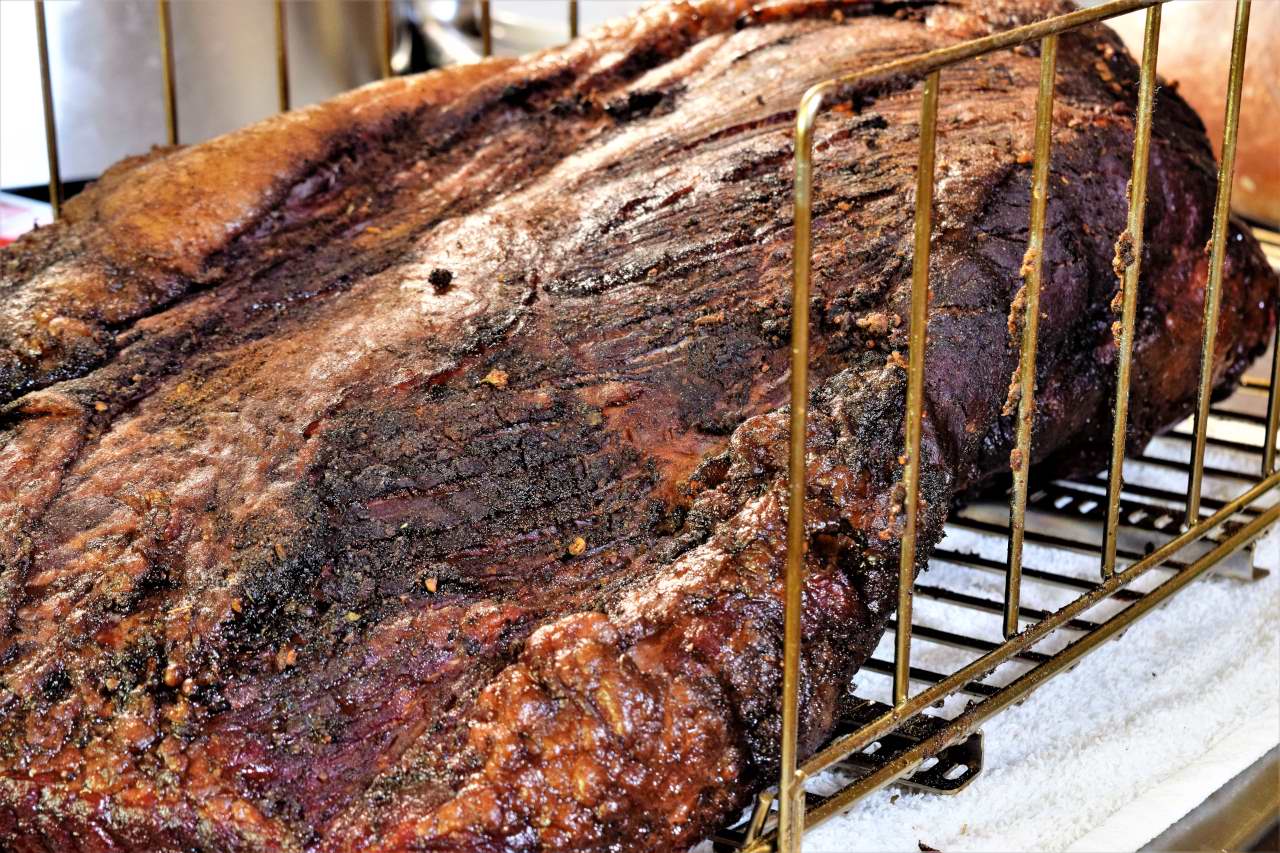Sous Vide: Stall-proofed Smoked Beef Brisket; No Texas Crutch Required
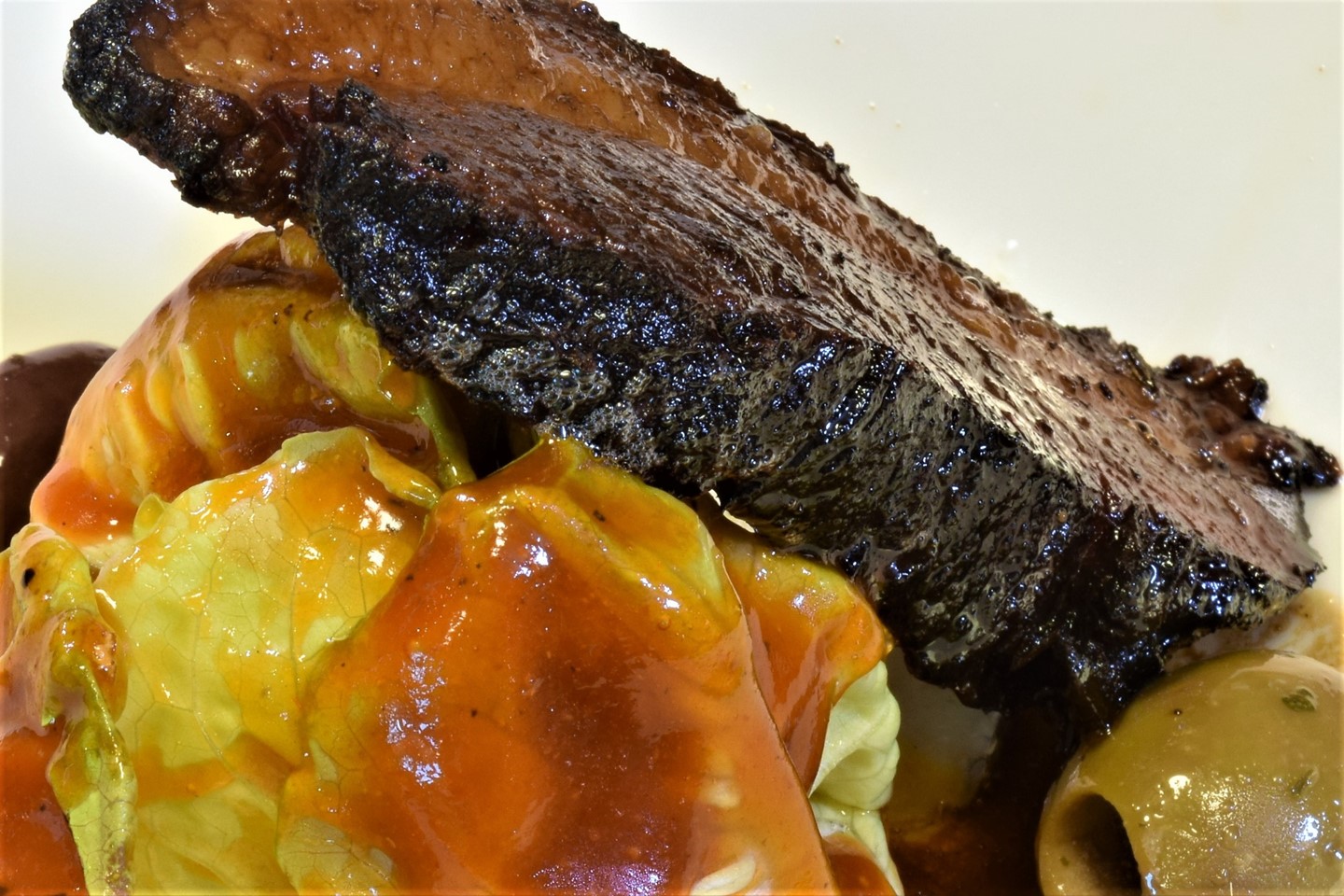
About
During the smoking process, beef briskets' internal temperature can stall at approximately 150 F. Can sous vide replace the Texas Crutch?
Ingredients
Beef Brisket: However much you want to make, minimim 2 lbs/1 Kg up to one entire brisket.
Gather 5 Tablespoons Kosher Salt. This will season 10 pounds of meat. Set aside.
Combine:
1 Tbsp. Ground Black Pepper.
1 Tbsp. Paprika.
1 Tbsp. Fennel.
1 Tbsp. Anise.
1 Tbsp. Chinese Star Anise.
1 Tbsp. Allspice.
1 Tbsp. Ginger,
1 Tbsp. Cinnamon.
1 Tbsp. Oregano.
Equipment requirements
Immersion circulator, portable or stationary.
Heat rated container, minimum of 2 gallons/8 liters.
Heat rated sous vide bags.
Colander
Sauce pot, minimum 2 quart/2 liter.
Kitchen tongs.
Flour shaker/sifter.
Infrared or probe thermometer.
Instructions
Notes: Sous vide replaces calculations based on weight calculations based on the shortest distance from the surface to the geometric center--in simple terms--the thickness. This is why different weights of the meat have almost no effect on temperature or time calculations. We will use a custom rub, isolating the salt from the mix itself so that we can control exactly how much salt is used without altering the amount of rub:
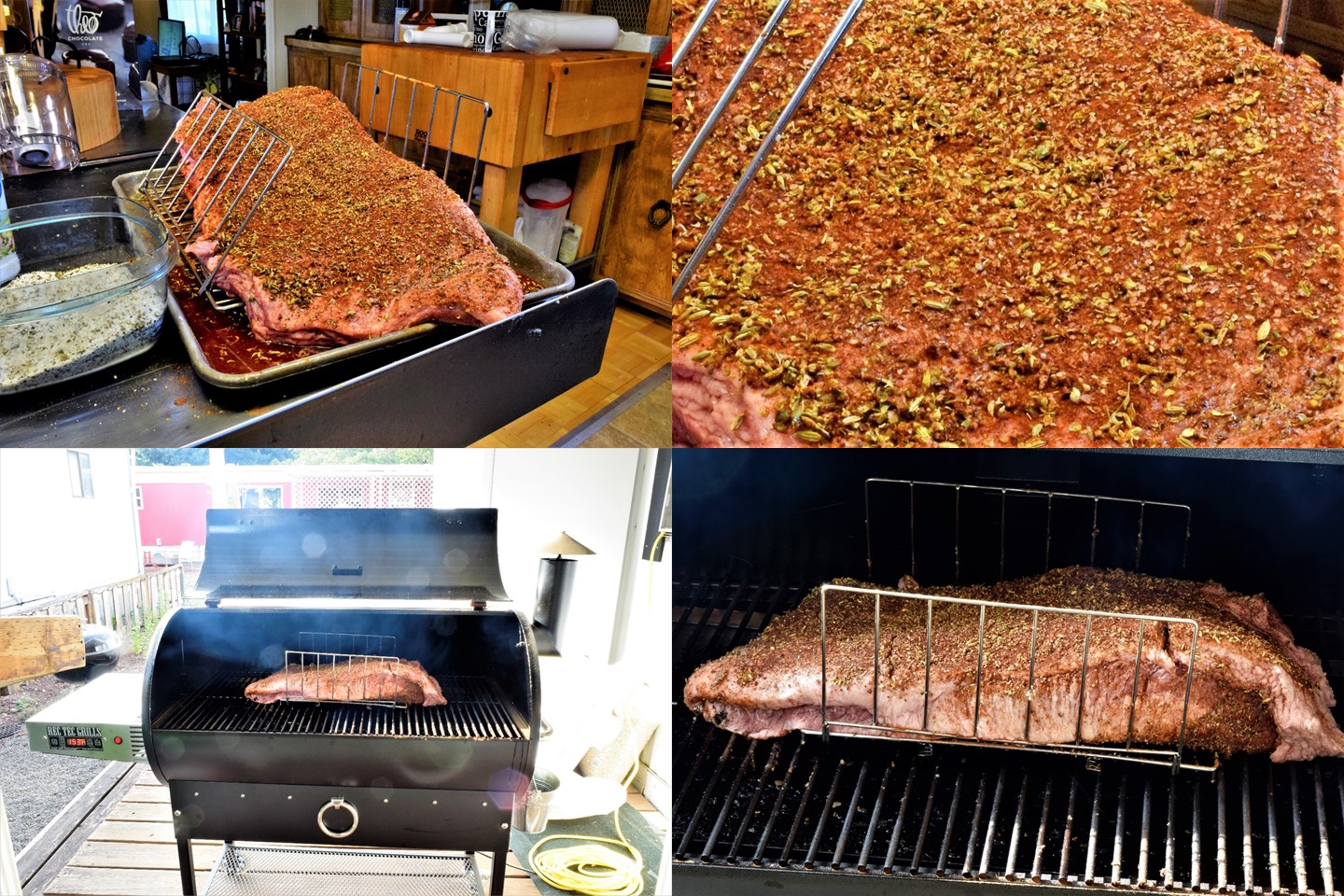 Hot smoke the brisket @ 225 F/107 C until it achieves 135F/57C internal temperature. The process takes approximately 3 hours. Once the target temperature is achieved, remove the brisket from the smoker and seal it in a heat rated sous vide bag it. We will only seal one end of the bag, so it does not matter if we use Ziploc bags, FoodSaver devices or a Chamber Vacuum. There are heat rated bags wide enough to accommodate a whole brisket. Unfortunately, the brisket is too long for most chamber vacuum machines. Channel vacuums' heating strips are not wide enough to seal a bag that contains an entire brisket. We can, however, seal the first opening at an angle, reverse the angle and seal again. In the bottom right slide, you can see the open end of the bag draped over the edge of the vessel. This is referred to as sans vide; the equivalent of sous vide without the actual vacuum sealing step. Regardless of method, the brisket must be fully submerged during processing for purposes of safety.
Hot smoke the brisket @ 225 F/107 C until it achieves 135F/57C internal temperature. The process takes approximately 3 hours. Once the target temperature is achieved, remove the brisket from the smoker and seal it in a heat rated sous vide bag it. We will only seal one end of the bag, so it does not matter if we use Ziploc bags, FoodSaver devices or a Chamber Vacuum. There are heat rated bags wide enough to accommodate a whole brisket. Unfortunately, the brisket is too long for most chamber vacuum machines. Channel vacuums' heating strips are not wide enough to seal a bag that contains an entire brisket. We can, however, seal the first opening at an angle, reverse the angle and seal again. In the bottom right slide, you can see the open end of the bag draped over the edge of the vessel. This is referred to as sans vide; the equivalent of sous vide without the actual vacuum sealing step. Regardless of method, the brisket must be fully submerged during processing for purposes of safety. 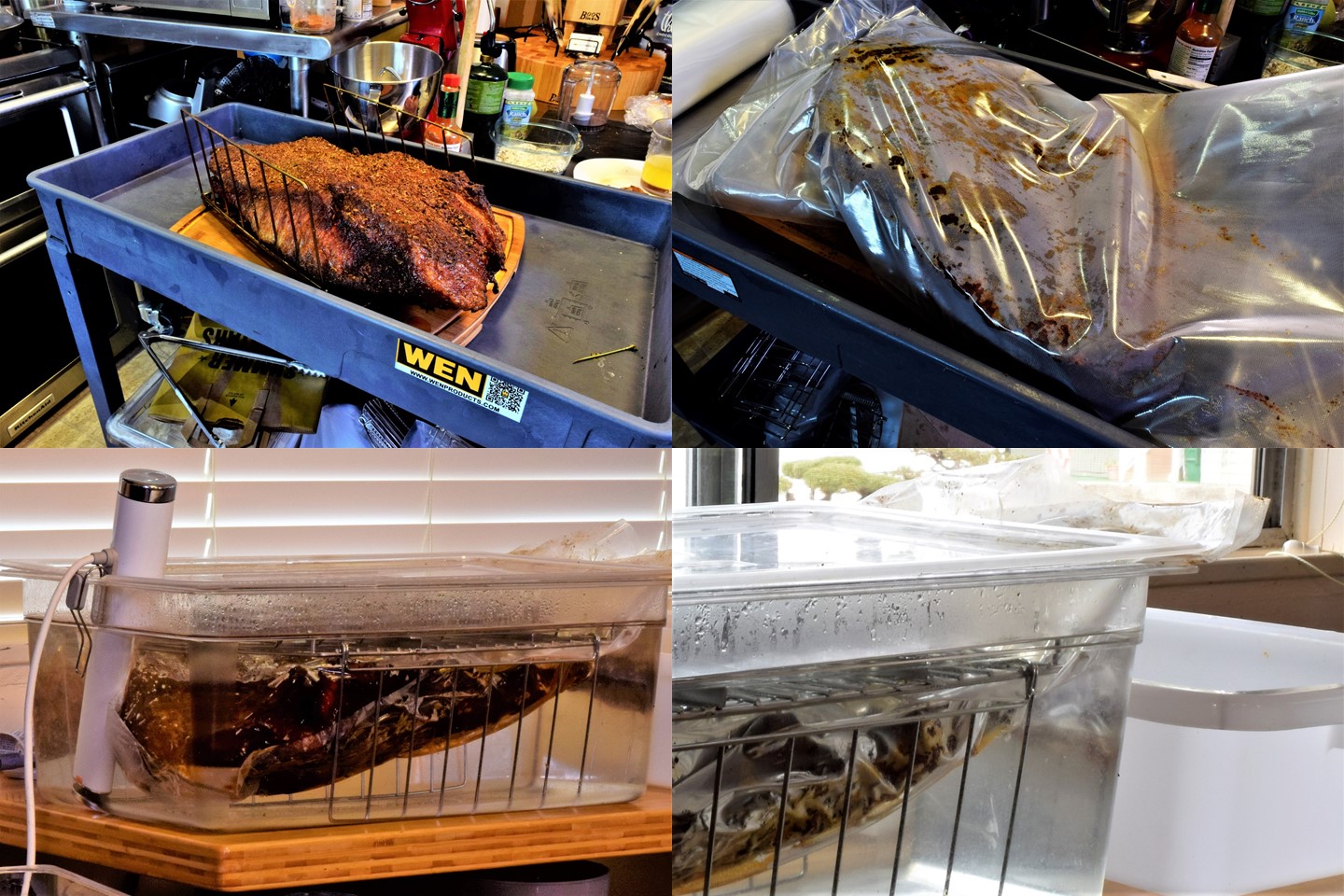
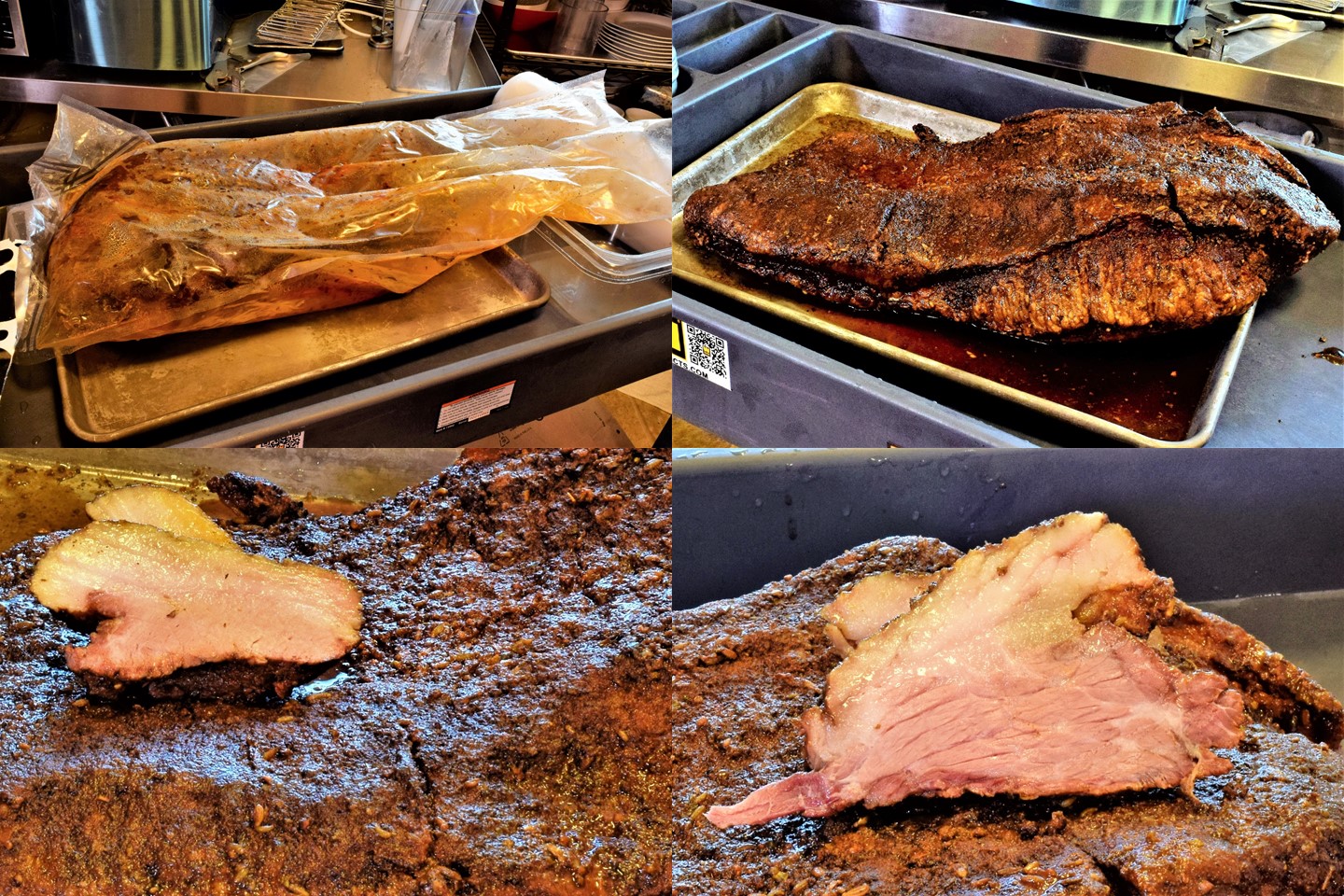 and this:
and this: 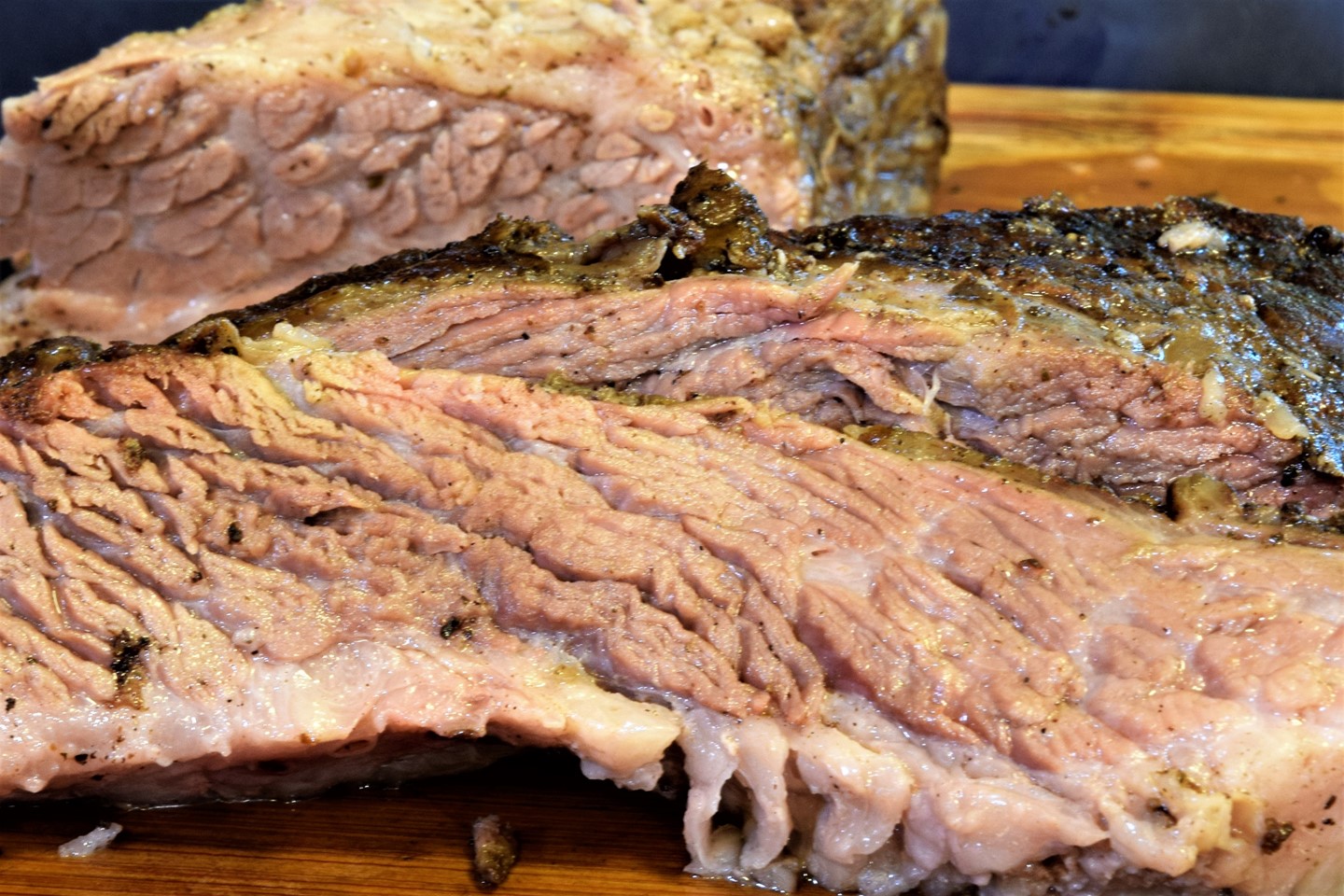 and this
and this 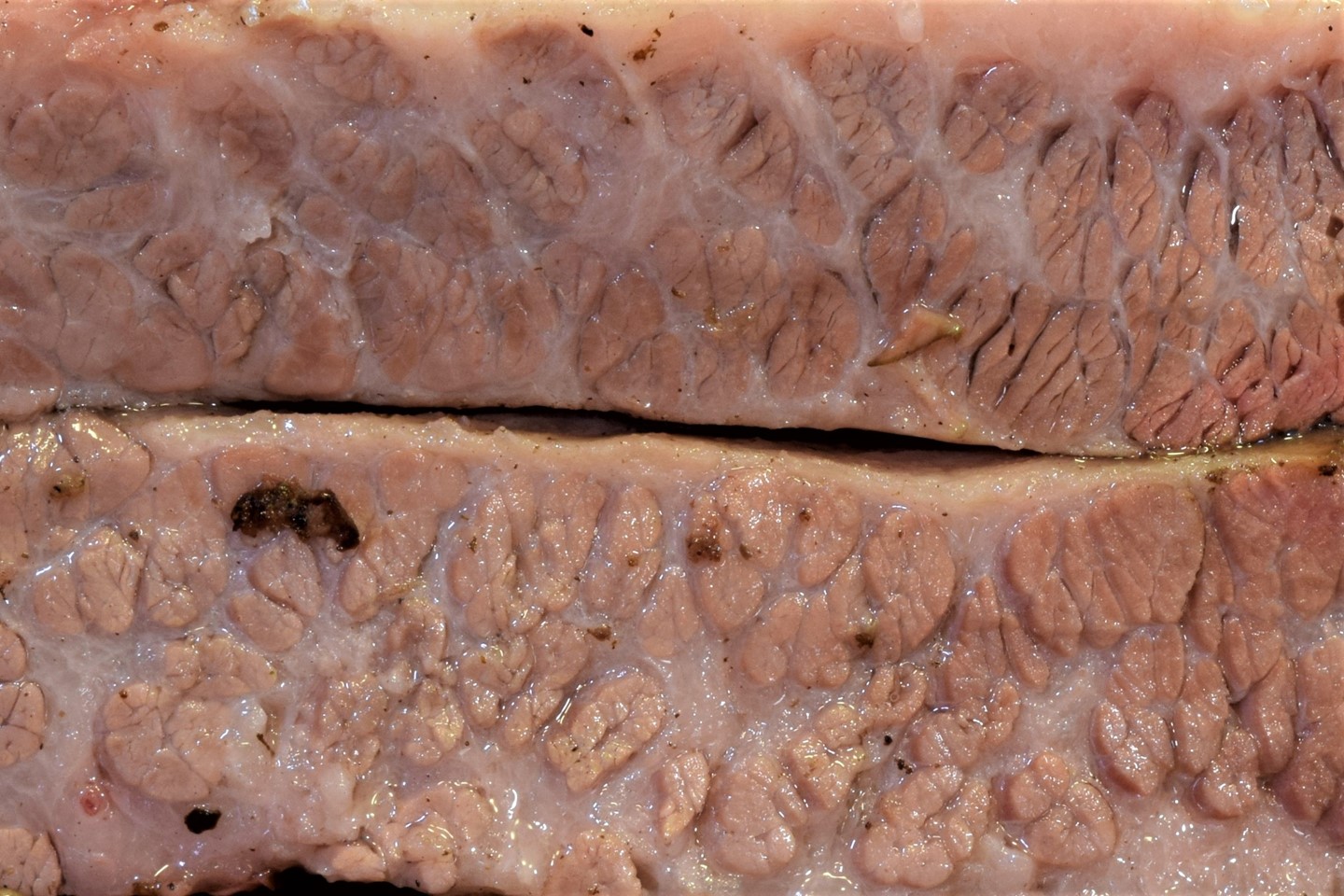 and this!
and this! 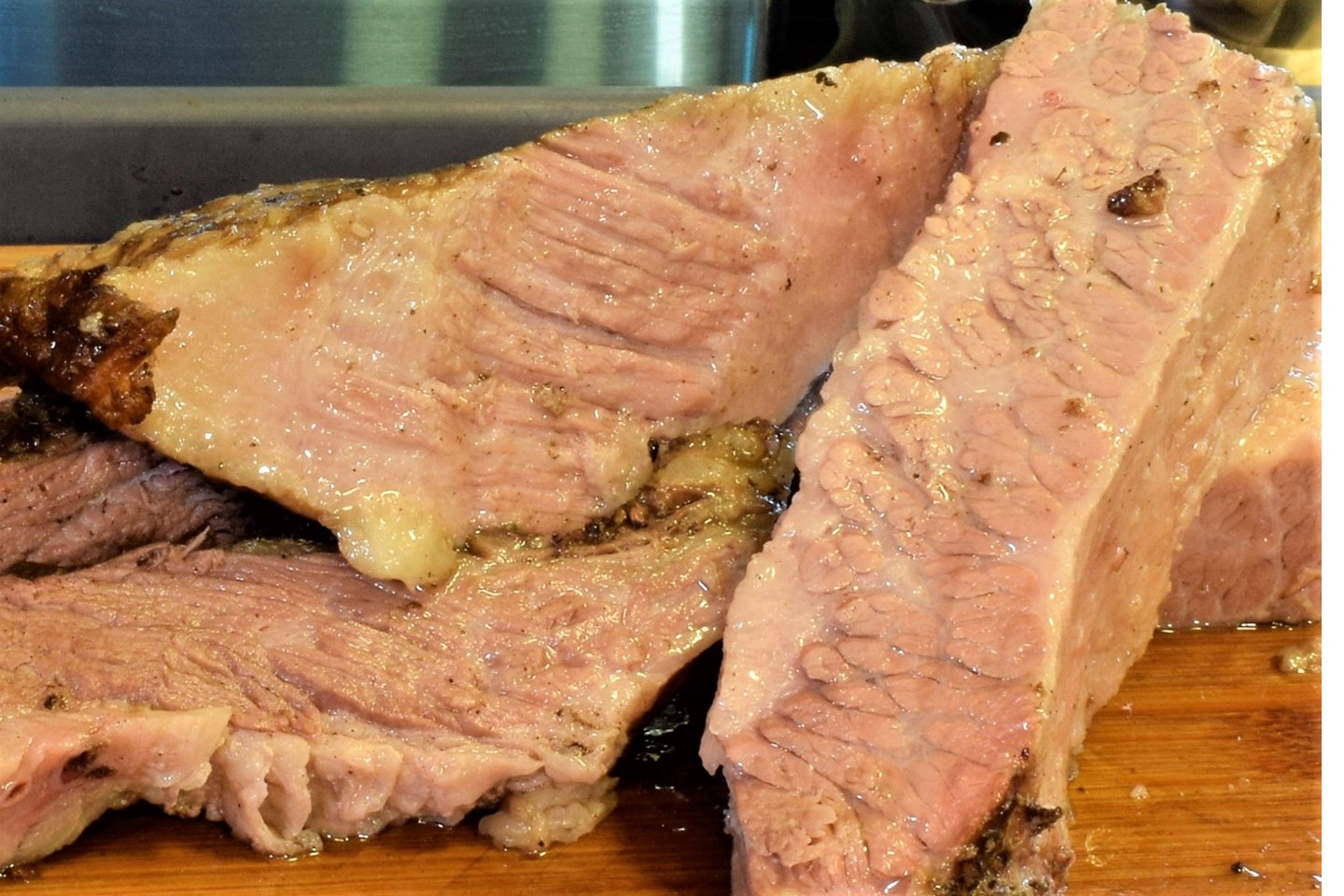
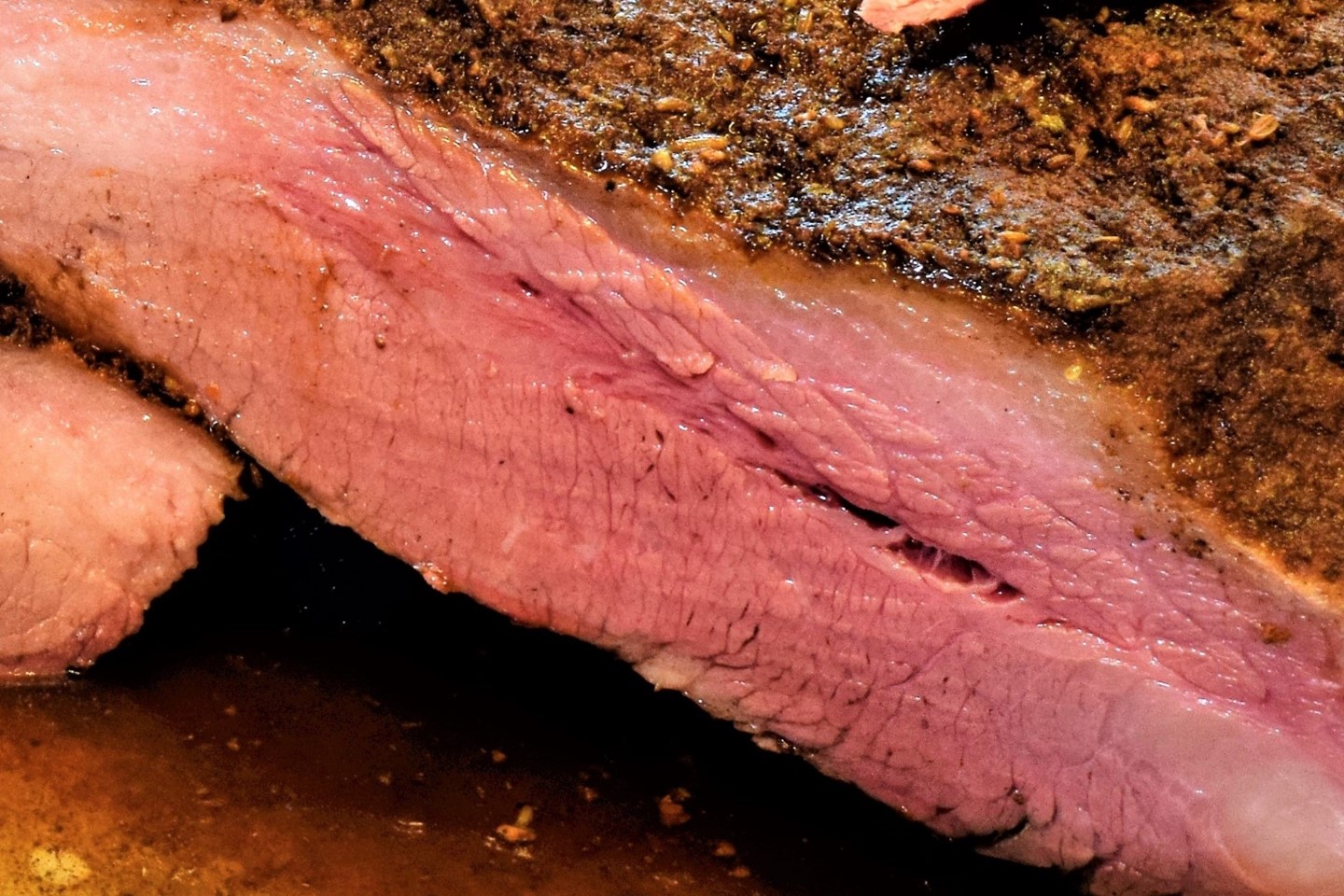 This...
This... 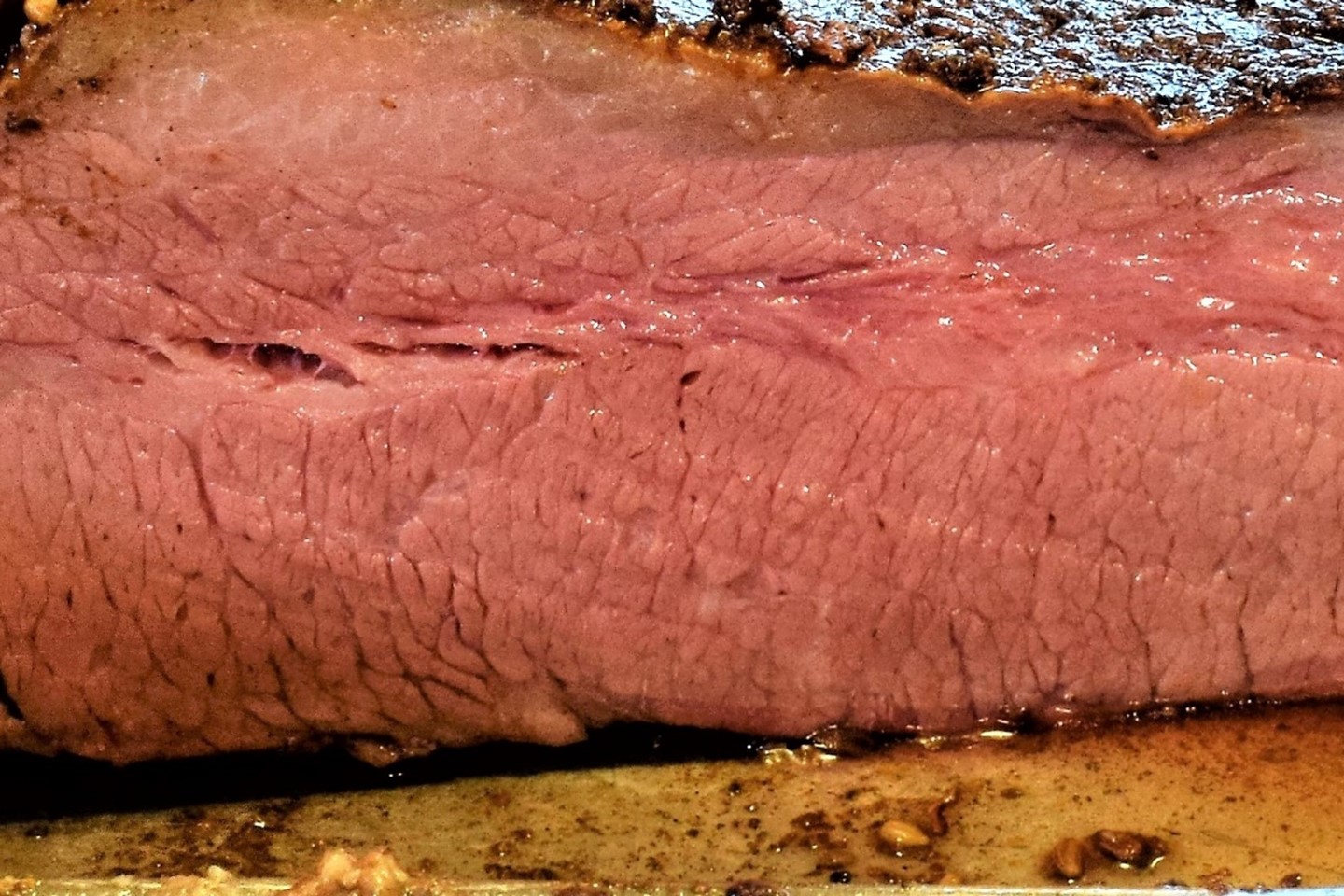 and this:
and this: 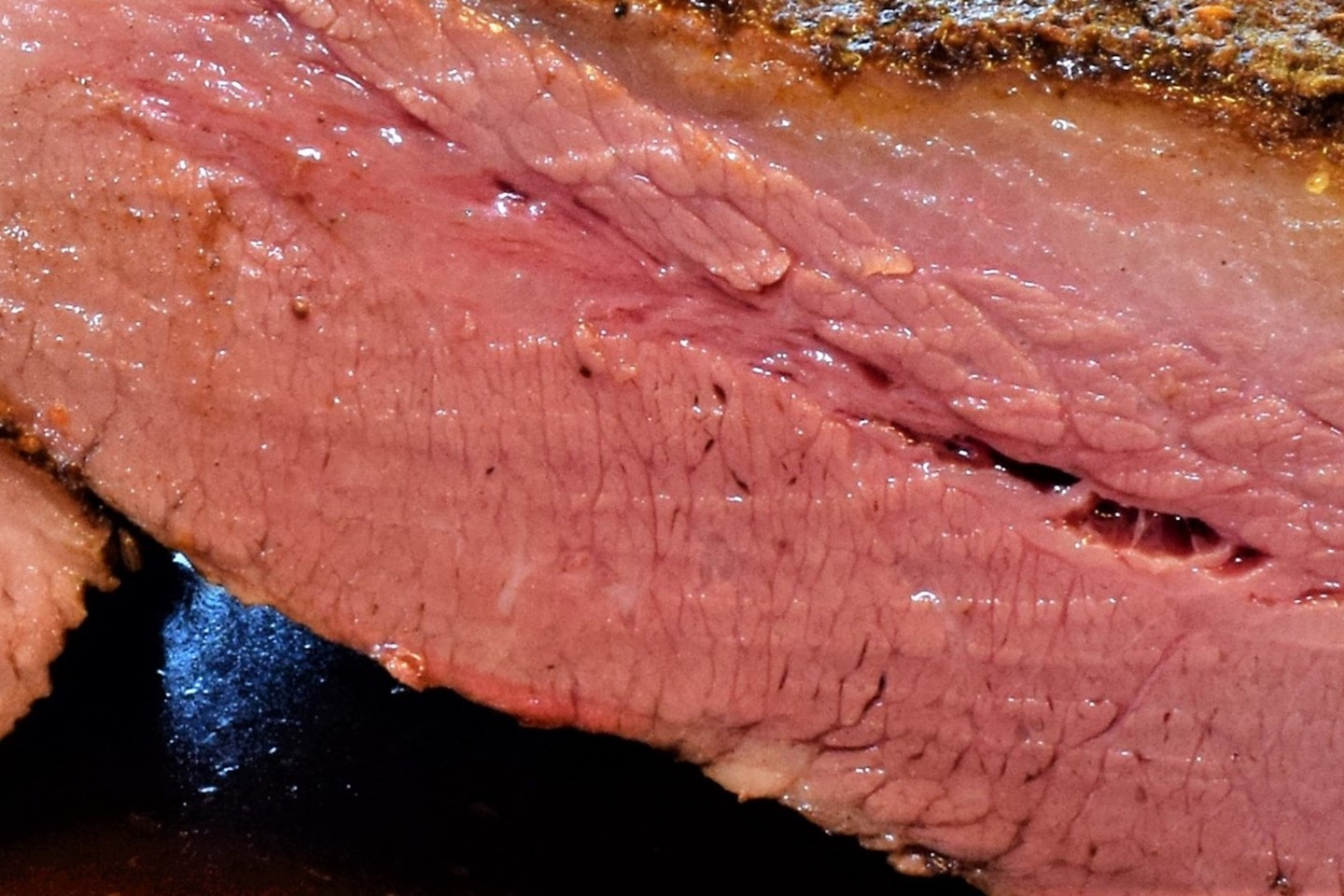 Now, what do you think about that?
Now, what do you think about that? 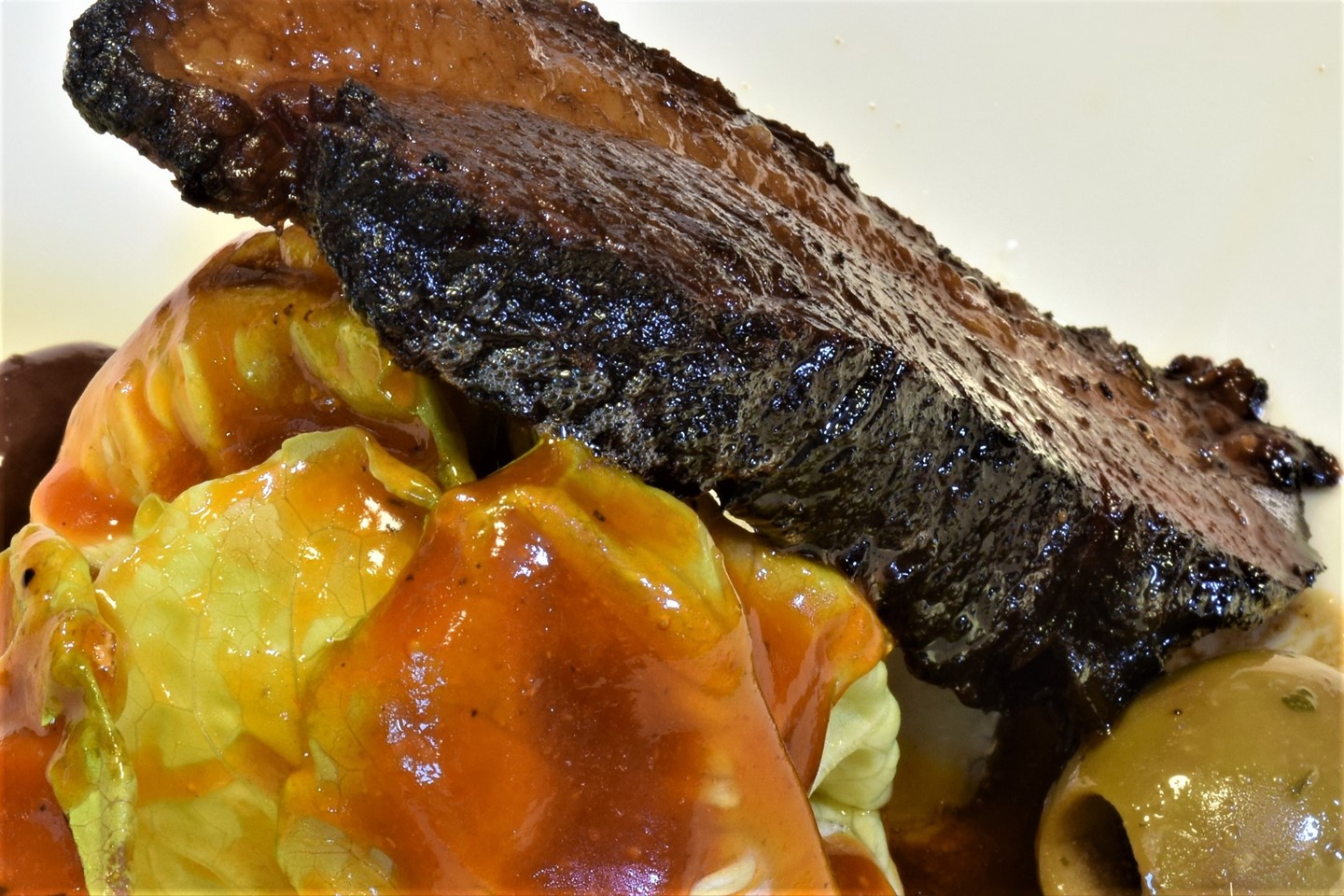 Professionally yours as always,
Professionally yours as always,
Serves 2/lb. of raw brisket Level of difficulty 2.75
Procedure:
Season the brisket with salt in the amount of 2 teaspoons/lb. of meat (450 g). Sprinkle heavily with the rub, as much or as little as you like. Rub it and press it so it clings to the surface. Hot smoke the brisket @ 225 F/107 C until it achieves 135F/57C internal temperature. The process takes approximately 3 hours. Once the target temperature is achieved, remove the brisket from the smoker and seal it in a heat rated sous vide bag it. We will only seal one end of the bag, so it does not matter if we use Ziploc bags, FoodSaver devices or a Chamber Vacuum. There are heat rated bags wide enough to accommodate a whole brisket. Unfortunately, the brisket is too long for most chamber vacuum machines. Channel vacuums' heating strips are not wide enough to seal a bag that contains an entire brisket. We can, however, seal the first opening at an angle, reverse the angle and seal again. In the bottom right slide, you can see the open end of the bag draped over the edge of the vessel. This is referred to as sans vide; the equivalent of sous vide without the actual vacuum sealing step. Regardless of method, the brisket must be fully submerged during processing for purposes of safety.
Hot smoke the brisket @ 225 F/107 C until it achieves 135F/57C internal temperature. The process takes approximately 3 hours. Once the target temperature is achieved, remove the brisket from the smoker and seal it in a heat rated sous vide bag it. We will only seal one end of the bag, so it does not matter if we use Ziploc bags, FoodSaver devices or a Chamber Vacuum. There are heat rated bags wide enough to accommodate a whole brisket. Unfortunately, the brisket is too long for most chamber vacuum machines. Channel vacuums' heating strips are not wide enough to seal a bag that contains an entire brisket. We can, however, seal the first opening at an angle, reverse the angle and seal again. In the bottom right slide, you can see the open end of the bag draped over the edge of the vessel. This is referred to as sans vide; the equivalent of sous vide without the actual vacuum sealing step. Regardless of method, the brisket must be fully submerged during processing for purposes of safety. 
More options
Traditional recipes for brisket are always served with the familiar "well done" appearance--to achieve this effect, set the immersion circulator or other PID device to 155 F/68 C x 18 hours, Rather than depending on the clock to calculate a "moment" when the brisket is properly tenderized, use the pinch/poke test to achieve the texture most desirable to you. This is what you will get: and this:
and this:  and this
and this  and this!
and this! 
But...
If you want your brisket to come out pink, you remove it from the smoker/oven when it achieves 125 F/52 C , bag it as we did before and set the immersion circulator to 130 F/54 C for 36 hours. The time required to achieve desired tenderness varies, so start using the pinch/poke test every 6 hours after the first 18. This will be the result: This...
This...  and this:
and this:  Now, what do you think about that?
Now, what do you think about that? How this affects your back yard event
Some practitioners get up "way early" in the morning and fire up the Q, hoping to serve their brisket before sunset. This usually requires some serious finger-crossing and even prayer. It need not be so. Sous vide can take the anxiety out of meal service scheduling. Assume that you want to have a BBQ party on Sunday afternoon/evening, after church or between games, etc. On Saturday morning, smoke your brisket as described above--approx. 3-4 hours. Then, remove from the smoker and stage into the sous vide bath overnight. The tenderization of the meat occurs very slowly at such low temperatures. The difference in tenderness between a certain moment and three hours before/after that moment is barely detectable, if at all. Either brisket is tender enough to cut into a steak to be pan seared/broiled or even re-smoked. Professionally yours as always,
Professionally yours as always, 